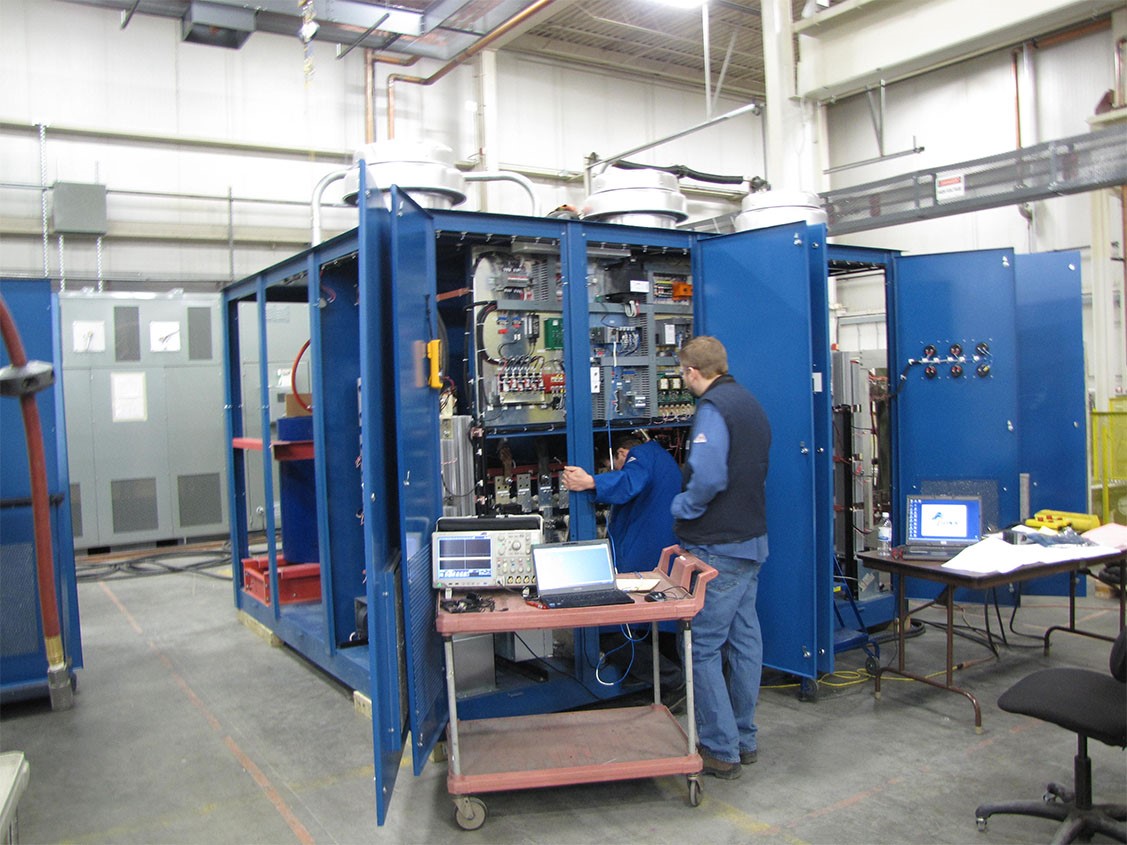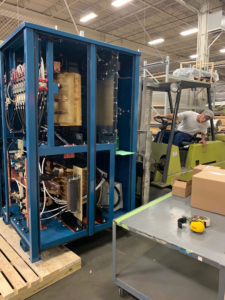Rectifiers play an extremely important part in industrial production and their performance can make or break your targets for production and profit. So industrial rectifier maintenance should be a high priority, right? Well…in my experience, I’ve seen a wide range of approaches to caring for rectifiers but, generally, they fall into one of three categories: Reactive Maintenance, Preventive Maintenance, or Predictive Maintenance. In this post, I’ll explain these three levels so you can both determine which reflects your current approach, and which one would best serve your facility, your production, and your profitability.
Level I: Reactive Maintenance
The reactive form of maintenance is akin to going in for an oil change every 3000 miles. You do it because that’s what you’re told to do. You don’t perform any checks or maintenance on your vehicle other than changing whatever the manufacturer tells you to change.
The reactive maintenance approach basically involves taking action only when a problem has arisen – when your equipment is down and there’s flames and smoke and downtime, you call us to fix it.

In this case, it is typically downtime itself that is the trigger for maintenance actions. Being reactive isn’t necessarily a bad approach — if you’ve got the extra time and it doesn’t hurt you from progressing as a business. But very few of the customers I’ve ever dealt with fall into this category — most facilities need all the uptime they can possibly muster–which is why the next two approaches to maintenance are preferable.
Level I Challenges & Benefits:
- Acceptable approach if maximum uptime is less of a priority
- No upfront costs to evaluate product performance
- Without a plan to manage spare parts, long lead-time items can pose a threat to restoring production
- More service calls – emergency service calls can be more costly and if technicians are booked, downtime may be extended
Level II: Preventive Maintenance
Most customers–roughly 80 percent of them–fall into the second level of power systems maintenance: Preventive Maintenance. This approach is akin to changing a part every two years and seven months (a length of time you decided on) because you know that it breaks every three years (a length of time you observed).
For instance, you know the bulbs in your shop will run for a certain amount of time, so you make a note to change them before that time runs out. In order to be prepared for unplanned breakdowns in between, you have accumulated a fair number of spare parts – some of which you may never need. Some parts have a shelf life, and if it’s passed, those parts may not function as expected when you go to use them. It’s important to manage critical spare parts blind and take a conservative approach to stocking parts if you want to be prepared — meaning you may discard unused, outdated inventory, but overall, the risk is worth it for all the times the part you need is available and is still functional.

This is the special sauce of maintenance work because few people understand the equipment well enough to go to this level.
As you can see, basic preventive maintenance is primarily based on time and anticipating failures and updates based on manufacturer recommendations. When experienced electrical maintenance personnel manage the process, this approach works fantastically well. However, in cases where a less experienced worker takes over, they are usually unsure of what to do with that “big hunk of metal in the corner of the shop” — and that opens your facility to some big performance risks.
Level II Benefits and Challenges:
- More uptime for your processes
- Need experienced and trained electrical maintenance personnel on staff to manage process
- Fewer quality problems due to power losses or interruptions
- Managing spare parts stock requires attention to avoid parts passing their performance window
- Fewer service calls
Level III: Predictive Maintenance
Level 3, what we call Predictive Maintenance, is really the gold standard — it is more comprehensive and cost-saving when amortized over the lifetime of your equipment. But there is an initial investment required to institute this type of program: having a qualified professional, either in-house or from outside your facility, to make determinations for your equipment based on actual data analysis.
Every component inside the rectifier can be tested for performance based on its engineering criteria: diodes, circuit boards, transformers, and much, much more. Basically, you are measuring to ensure that whatever amount of energy you are supplying to the unit , the same amount is coming back out.

In such a case, it’s important to take the time analyze and test the critical control points of your process to create objective evidence on each rectifier component’s status in the arc of its lifecycle: in other words, how much life is left in each component. This approach lets data drive decisions on working equipment to predict and show where potential equipment problems lie.
Most customers who are reading this — particularly in metal finishing — are already used to testing their chemistry daily. This testing includes measurements around conductivity, pH, total dissolved solids, viscosity, specific gravity, and total vs free acidity. The approach of predictive maintenance is very similar…and no less important.
For instance, if the rectifier doesn’t spit out the right amount of electricity — now you have a critical point of your process that’s out of your control. Level III is all about dialing into your machines, so you are achieving the maximum lifetime value out of them — giving you the highest process efficiency and most importantly, the highest quality product possible.
As a bonus to this style of maintenance, managing spare parts is much less of a burden for your maintenance and procurement staff. You can order spare parts slightly ahead of needing them to keep cash in your business, and you’ll need fewer critical spare parts in your inventory. You may only need long lead time parts in your possession or negotiate your parts provider to stock them for you.
Level III Benefits and Challenges:
- Most uptime for your processes
- Greatest lifecycle achievement for equipment
- Lowest overall replacement price for parts and new equipment
- Lowest risk to quality due to power losses or interruptions
- Smaller budget needed for spare parts
- Fewest service calls
- Larger upfront cost for initial evaluation and data-gathering
- Need highly skilled staff members with deeper understanding of equipment, or partner with a qualified service provider familiar with your equipment
Dynapower can accommodate any of these particular approaches. Please contact us at (802) 860-7200 to help decide which approach is right for you!